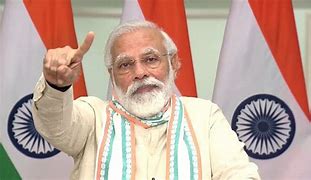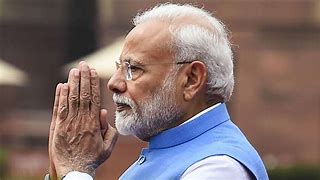Feature
Modi, Satyarthi on Fortune list of greatest leaders

New York: Prime Minister Narendra Modi and Nobel laureate and child rights activist Kailash Satyarthi figure among the Fortune magazine’s 2015 list of the world’s 50 greatest leaders who are transforming “business, government and philanthropy”.
While Modi is ranked fifth, Satyarthi comes in at 28th on the list that is topped by Apple CEO Tim Cook.
“Modi rode to victory in (the Indian general) elections last year on a wave of economic dissatisfaction,” the profile on the Indian prime minister reads.
“But while many reformers before him have talked a good game, Modi has actually begun to deliver on his promises — making genuine progress in his efforts to make India more business-friendly and less regulated, addressing violence against women, improving sanitation, and patching up relations with other Asian countries and the US. There is, to be sure, a long way to go,” it stated.
According to the magazine, fully achieving any of Modi’s goals “will require reforming India’s powerful, widely corrupt bureaucracy”.
“But he has put the bureaucrats on notice while taking action where he can — for example, by substantially increasing allowable foreign investment in the insurance industry. And in greatly simplifying the procedure for getting a visa to visit India, he has symbolically lowered the status of bureaucrats and raised that of potential outside investors,” it stated.
The magazine said that Modi seized control of the national agenda and “sent a message that it’s time for all of India — not just its infotech services sector — to join the 21st century”.
“The IMF and other forecasters now believe India will be growing faster than China in a year or two,” it said.
Regarding Satyarthi, who shared the 2014 Nobel Peace Prize with Pakistani girls’ education activist Malala Yousufzai, the magazine said the Indian child rights activist “has led the global fight against child labour for more than three decades”.
“Founded in 1980, his Bachpan Bachao Andolan (Save Childhood Movement) has protected the rights of some 83,000 children around the world. Child labour, he says, is as much an economic issue, perpetuating poverty and illiteracy, as it is about human rights. In any case, no one has done as much to prevent it as he has,” Satyarthi’s profile reads.
Among others to figure on the list are European Central Bank president Mario Draghi (second), Chinese President Xi Jinping (third), Pope Francis (fourth), General Motors CEO Mary Barra (9th), Hong Kong student activist and a leader of last year’s Occupy Central movement Joshua Wong (10th), Bill and Melinda Gates (18th), Facebook founder and CEO Mark Zuckerberg (25th), Uber CEO Travis Kalanick (44th) and Japanese botanist and plant ecology expert Akira Miyawaki (50th).
Raj Panjabi, the Indian-origin CEO of the non-profit organisation Last Mile Health that works in Liberia to save lives in some of the most remote villages, figures at number 34 on the list.
Panjabi, who spent the first nine years of his life in Liberia, fled that country after a civil war broke out.
“In 2007 he went back — this time with a medical degree and a mission: to train villagers in remote areas to be health care workers,” Panjabi’s profile reads.
“Seven years later, when Ebola struck, Panjabi’s Last Mile Health rapidly trained 1,300 Liberians — an army that helped keep the virus at bay in many parts of the country. Now he’s working with Liberia’s government to launch a national community health worker programme.”
Entertainment
Meghalaya Reserves Legalized Gambling and Sports Betting for Tourists

The State Scores Extra High on Gaming-Friendly Industry Index
Meghalaya scored 92.85 out of 100 possible points in a Gaming Industry Index and proved to be India’s most gaming-friendly state following its recent profound legislation changes over the field allowing land-based and online gaming, including games of chance, under a licensing regime.
The index by the UK India Business Council (UKIBC) uses a scale of 0 to 100 to measure the level of legalisation on gambling and betting achieved by a state based on the scores over a set of seven different games – lottery, horse racing, betting on sports, poker, rummy, casino and fantasy sports
Starting from February last year, Meghalaya became the third state in India’s northeast to legalise gambling and betting after Sikkim and Nagaland. After consultations with the UKIBC, the state proceeded with the adoption of the Meghalaya Regulation of Gaming Act, 2021 and the nullification of the Meghalaya Prevention of Gambling Act, 1970. Subsequently in December, the Meghalaya Regulation of Gaming Rules, 2021 were notified and came into force.
All for the Tourists
The move to legalise and license various forms of offline and online betting and gambling in Meghalaya is aimed at boosting tourism and creating jobs, and altogether raising taxation revenues for the northeastern state. At the same time, the opportunities to bet and gamble legally will be reserved only for tourists and visitors.
“We came out with a Gaming Act and subsequently framed the Regulation of Gaming Rules, 2021. The government will accordingly issue licenses to operate games of skill and chance, both online and offline,” said James P. K. Sangma, Meghalaya State Law and Taxation Minister speaking in the capital city of Shillong. “But the legalized gambling and gaming will only be for tourists and not residents of Meghalaya,” he continued.
To be allowed to play, tourists and people visiting the state for work or business purposes will have to prove their non-resident status by presenting appropriate documents, in a process similar to a bank KYC (Know Your Customer) procedure.
Meghalaya Reaches Out to a Vast Market
With 140 millions of people in India estimated to bet regularly on sports, and a total of 370 million desi bettors around prominent sporting events, as per data from one of the latest reports by Esse N Videri, Meghalaya is set to reach out and take a piece of a vast market.
Estimates on the financial value of India’s sports betting market, combined across all types of offline channels and online sports and cricket predictions and betting platforms, speak about amounts between $130 and $150 billion (roughly between ₹9.7 and ₹11.5 lakh crore).
Andhra Pradesh, Telangana and Delhi are shown to deliver the highest number of bettors and Meghalaya can count on substantial tourists flow from their betting circles. The sports betting communities of Karnataka, Maharashtra, Uttar Pradesh and Haryana are also not to be underestimated.
Among the sports, cricket is most popular, registering 68 percent of the total bet count analyzed by Esse N Videri. Football takes second position with 11 percent of the bets, followed by betting on FIFA at 7 percent and on eCricket at 5 percent. The last position in the Top 5 of popular sports for betting in India is taken by tennis with 3 percent of the bet count.
Local Citizens will Still have Their Teer Betting
Meghalaya residents will still be permitted to participate in teer betting over arrow-shooting results. Teer is a traditional method of gambling, somewhat similar to a lottery draw, and held under the rules of the Meghalaya Regulation of the Game of Arrow Shooting and the Sale of Teer Tickets Act, 2018.
Teer includes bettors wagering on the number of arrows that reach the target which is placed about 50 meters away from a team of 20 archers positioned in a semicircle.
The archers shoot volleys of arrows at the target for ten minutes, and players place their bets choosing a number between 0 and 99 trying to guess the last two digits of the number of arrows that successfully pierce the target.
If, for example, the number of hits is 256, anyone who has bet on 56 wins an amount eight times bigger than their wager.























